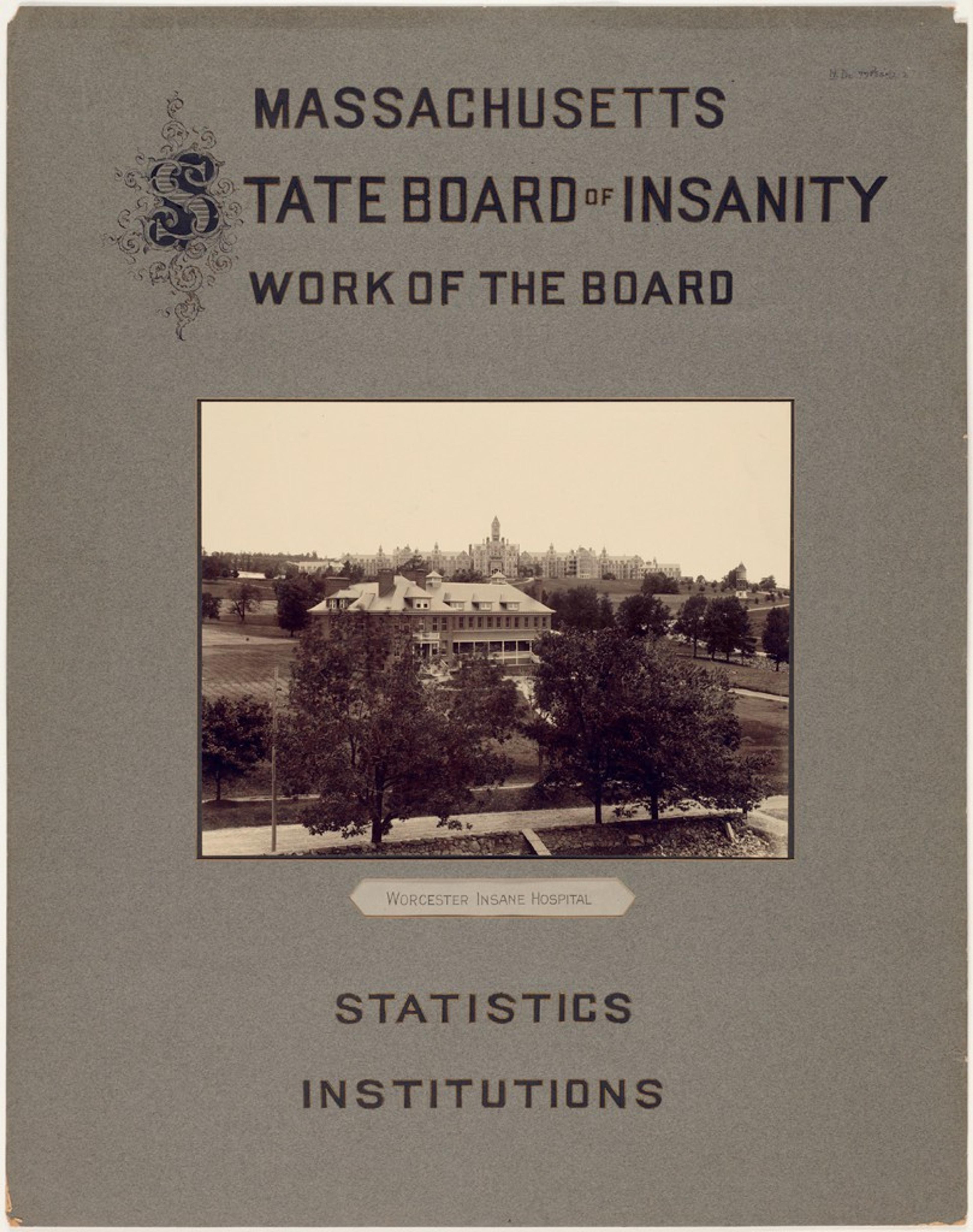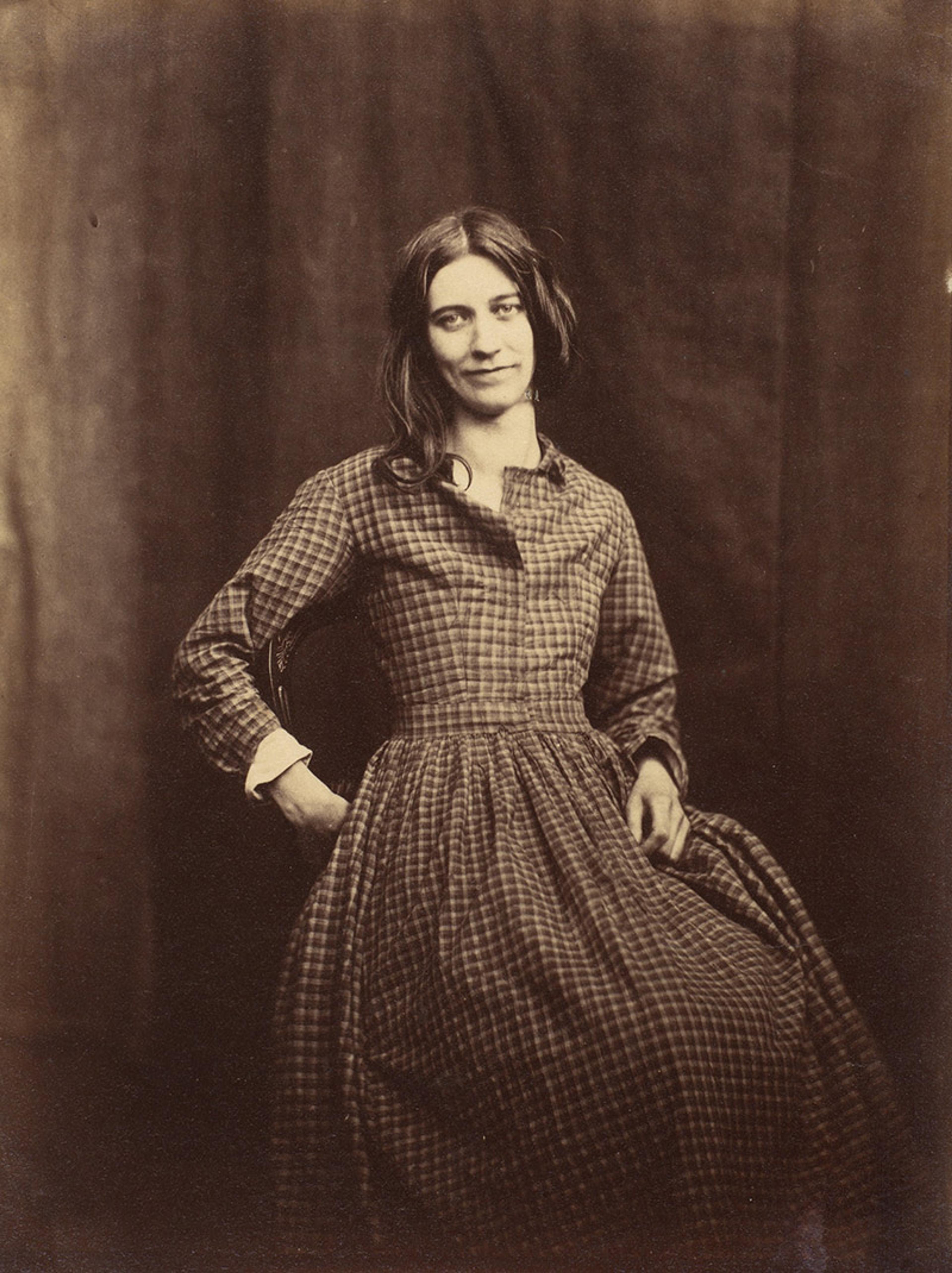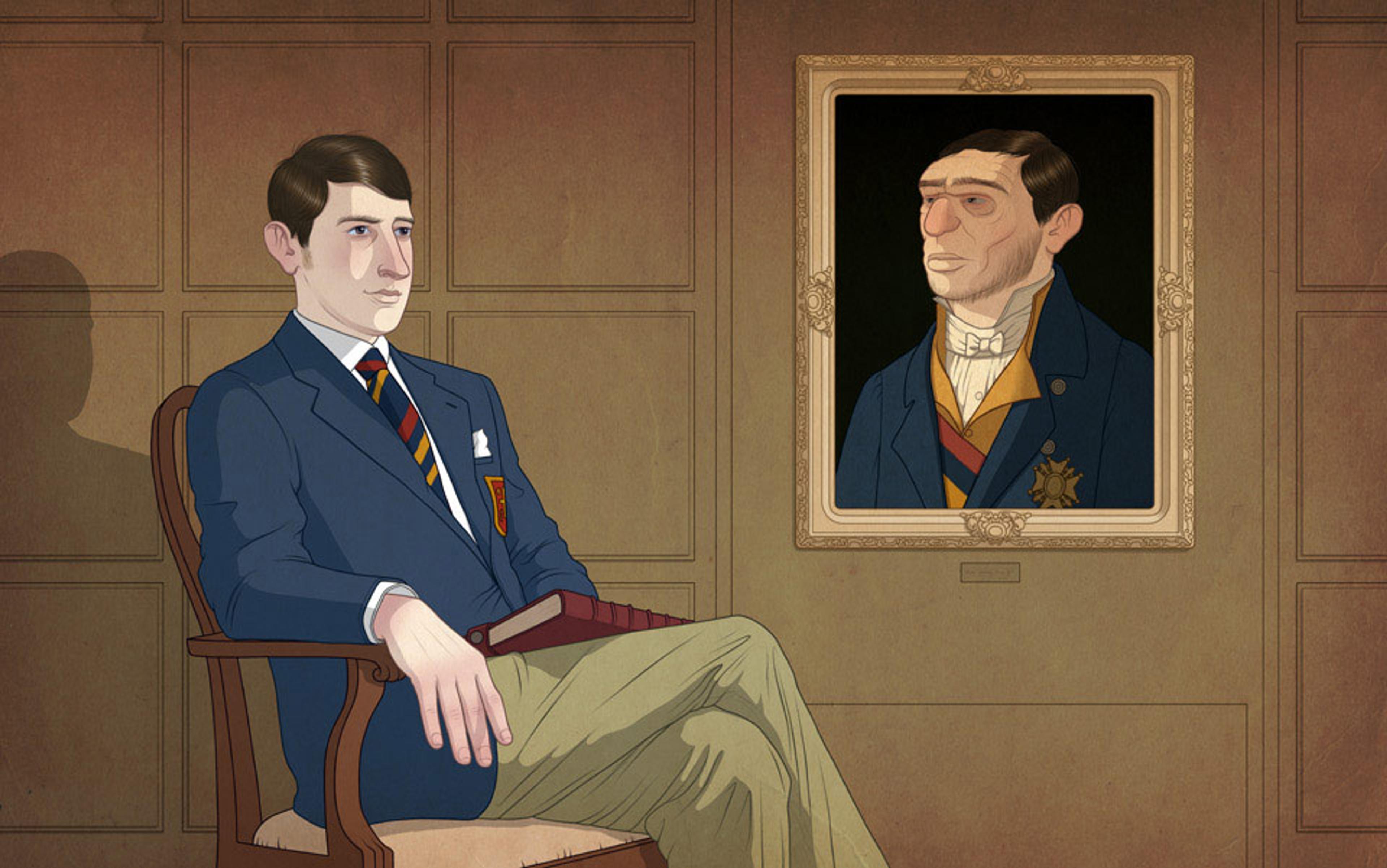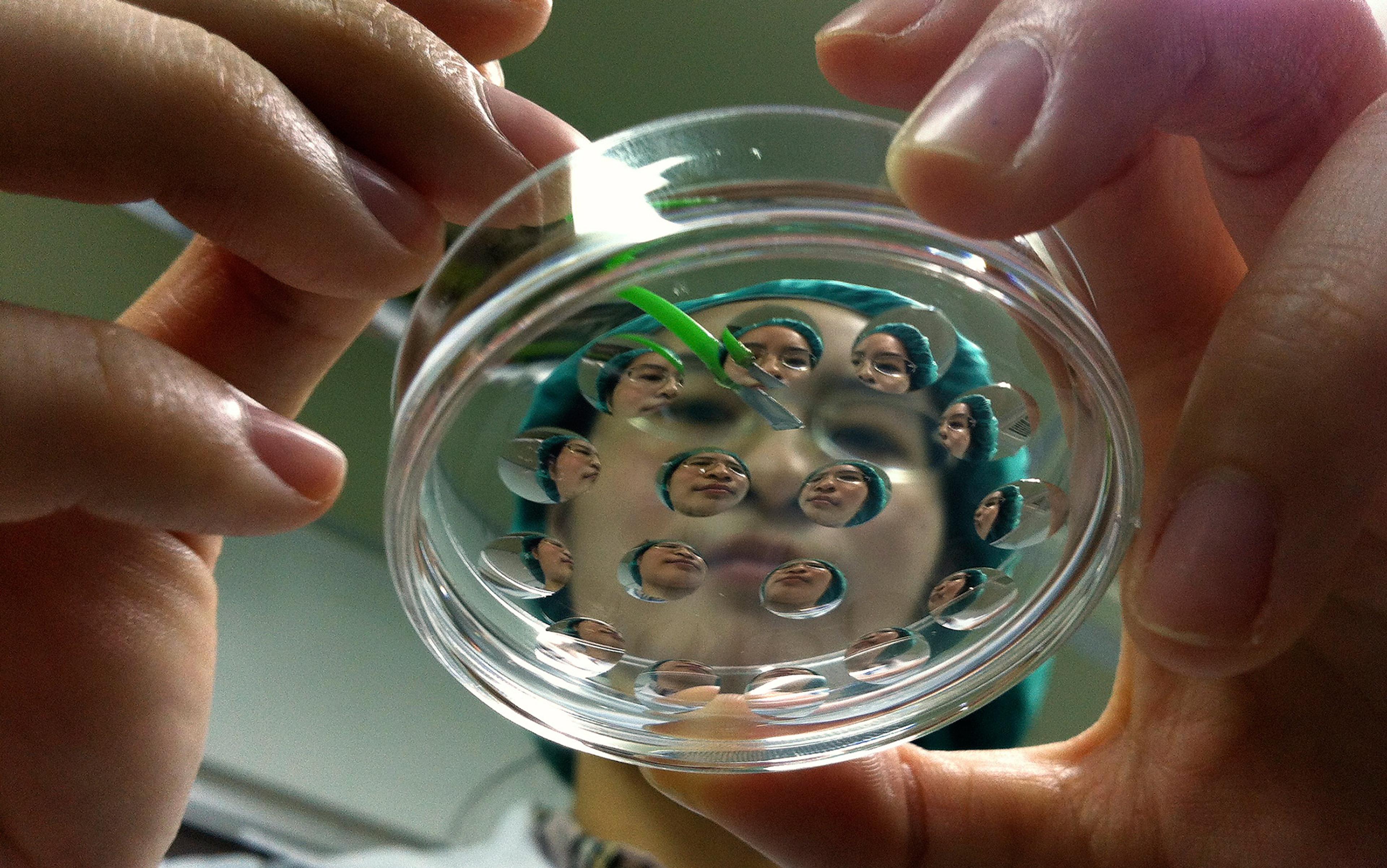People speak of genes and DNA nowadays as if they were as tangible as English peas and Ferris wheels, and as if the personal traits that matter to us correspond to impalpable entities identified by modern genetics and genomics. The human concern with heredity is, of course, much older. Charles Darwin’s cousin Francis Galton began preaching human improvement through planned breeding in 1865, and his name is still practically synonymous with the eugenics movement, which took off a few decades later. Galton was often described as a creative genius (as opposed to an evil one, in our modern reckoning) who singlehandedly developed a new science of hereditary intervention. Stronger claims still continue to be made for the genetic contributions of Gregor Mendel, whose hybridisation experiments on peas were neglected for decades until suddenly in 1900 he began to be celebrated as the founder of a new science of genetics.
Lone geniuses make for appealing – but generally misleading – tales of science. The study of human heredity was not a lonely enterprise in Galton’s day. For most of the 19th century, it was focused on the battle against insanity. Even before that, madness had occasioned suffering on a very large scale, and was no less absorbing to writers and medical men on that account: William Shakespeare has a madman in many of his works, whether comic or tragic, and the tradition still endures in diverse art forms. I wondered how historians of genetics could have ignored for so long the presumed link between insanity and heredity. For me, the topic opened up around 2005, when I went looking for the sources of data used by researchers on heredity either side of 1900 for my book Genetics in the Madhouse (2018). It came as no surprise that mental hospitals and schools for the ‘feebleminded’ had abundant records. I had not expected, however, that doctors and psychologists in the 19th century were so deeply engaged in hereditary investigation – analysing it for the sake of more precise measures of hereditary transmission – still less that systematic recording of hereditary information on asylum patients went back to the 1820s, and more sporadic ones at least to 1789.

Silver gelatin print mounted to board (c1903). Courtesy Harvard Art Museums/Fogg Museum
This new science of human heredity was saturated in statistical tables, compiled to display the order of these mental institutions and as gestures of institutional accountability. On the surface, they appear dull and routine. The text accompanying these tables in the reports makes clear that alienists (as asylum doctors were then called) took the numbers quite seriously. But to learn how they worked from inside, and to comprehend what was at stake, I had to get closer to scenes of everyday action. The files of these institutions were and remain living archives, which soon caught me up in the dynamic they created. State mental hospitals, scarce before 1815, had by 1860 become providers of a service that was obligatory for self-consciously modern states. Their expansion far outpaced the growth of populations, a stunning institutional success that betokened catastrophic medical failure. Intolerable expenses seemed to purchase far-from-sufficient cures, and it was often impossible even to maintain a decent display of cleanliness and quiet. By the 1950s, the scale of asylumdom was comparable to that of contemporary prisons in the United States: only after the overhyped promise of pharmaceutical remedies provided a rationale to send patients away could a shuttering of state mental hospitals commence. Would the files, too, succumb to mould and gnawing rats?
While some records went through years of purgatory, most eventually found their way into public archives. But then, there arose a new challenge: strict new rules for human subjects. The official standard for me to gain access to the casebooks of the Worcester Lunatic Asylum in Massachusetts was the same as if I had proposed to conduct a clinical experiment on living patients: my research had to bring more benefit than harm to these suffering souls, many of whom had been dead for 150 years. As it happened, the Massachusetts review board did all it could to facilitate my access to these records. German, English, French and Canadian archives also found ways to provide access to old patient files. In Zurich and Albany, in the face of persistent refusal, I gave up.

Worcester Lunatic Asylum, Worcester, Massachusetts (c1903). Courtesy Harvard Art Museums/Fogg Museum
In most cases, the silence of the documents on key issues posed a greater obstacle to my writing than restrictions on access. The admission books almost never identified informants or explained the interview process. Only rarely did I even come close to being a fly on the wall witnessing the arrival of new patients. Paradoxically, the best way to get a sense of routine data work was to seek out narrative descriptions where lapidary entries in registration books and tables might be linked to scenes of inquisition and discovery. Some asylums, such as the York Retreat in England, required a lengthy filled-out form to determine if a prospective patient was suited to the institution. Many mentioned heredity as a cause, as in these entries from the early 1830s:
Hereditary in the family & supposed in this case to be brought into activity by distress of mind at the loss of her husband.
Hereditary – her Father died in the Lunatic Asylum for the County of Gloucester in the year 1830.
Even before then, some madhouse doctors were energetic data hounds. I begin Genetics in the Madhouse with the desperate efforts of Dr William Black to procure data bearing on the prospects of recovery of George III, who suffered one of his bouts of disabling madness in 1788-89. Although the Royal Asylum of Bethlem (Bedlam) in London did not keep detailed patient records, Black soon learned that the apothecary there had extensive private ones. Responding to the urgency of the moment, Black rushed into print a collection of pertinent tables, including one giving a breakdown of causes of insanity. This was the prototype for the thousands of such tables that began appearing about 1830 in reports of almost every institution. It appears in most cases that this information originated with lay informants, not doctors. They understood heredity as a fact of ordinary experience, discernible whenever a family member was similarly afflicted.
Black devised his tables for the light they might shed on an urgent question of state. They were, however, readily turned to humdrum use. Routine statistical recording was the quid pro quo for subsidised asylum care. An admissions book typically includes a row for each patient and a score of columns in which to record identifying information such as religion and occupation along with basic medical data including disease form, how long insane, and presumed cause. There are spaces in which to record the eventual outcome. The entries in most of these columns could be summed up in a table. Cure rates and causes drew the most interest, and a growing disenchantment as to curability put ever more stress on heredity as the driving force of madness. In effect, asylum doctors supported eugenics avant la lettre. Every year in almost every institution, heredity appeared as a leading cause of insanity. By the 1840s, two decades before Galton took up the topic, it was becoming commonplace to warn against marrying into a tainted lineage.
Nineteenth-century reproductive interventions, though mild in comparison with forced sterilisation in the century following, were real. Decisions to intern indigent women were encouraged by fears that they would reproduce their presumed mental defects. These proto-eugenic policies were allied to programmes of research that were designed to anticipate the outcomes of marriages involving diagnosed insanity. Asylum studies thus inaugurated a continuing tradition of hereditary investigation. Although the authors of this work did not achieve enduring scientific renown, their publications were known internationally to doctors and statisticians from their own time until at least the 1910s. This story is not of unsung heroes or villains whose work lay hidden in disordered files, but of a recognised tradition that more recent scientists and historians have not cared to remember.
One influential strategy for improving our knowledge of insanity was the census. The most obvious reason for a systematic count of the insane was to determine how many places were required to provide adequate care. Alas, every count soon proved to be an undercount, and the burgeoning numbers stimulated grander eugenic ambitions. Doctors and health ministries in Germany, for example, endeavoured to assemble inventories of family relationships linking the victims of insanity. A steady hum of schemes to harmonise the statistics culminated in 1867 with a bold international campaign of standardisation. Too ambitious to implement, it collapsed three years later with the outbreak of war between France and Prussia. The push for uniform categories, mainly on a national level, provided a basis for comparison of numbers from diverse institutions. Even so, large-scale statistics of insanity had only a secondary role in studies of heredity. The studies that mattered most were carried out within institutions or local communities, where it was possible to generate data that was more nearly homogeneous.

Patient, Surrey County Lunatic Asylum (1850-58). Courtesy The Metropolitan Museum of Art
The case books of the York Retreat, for example, offer silent testimony to the growing seriousness of efforts to assess the role of heredity in propagating insanity. John Thurnam, appointed as medical superintendent in 1838, revisited the casebooks from the first four decades of the Retreat to identify as many insane relatives as he could find. As a Quaker director of a Quaker institution, Thurnam had excellent access to information on families. His tables provided a model for asylum directors, who, he urged, should never be content merely to record what siblings or parents told them, but must instead keep an ear to the ground for all kinds of information. With better data he hoped to demonstrate that family taint was not just one cause among many but, often, a key source of susceptibility.
In 1859, the assistant physician of a much-praised new institution near Christiania (Oslo) in Norway took hereditary research to a new level. Ludvig Dahl used the results of the latest Norwegian census to pick out districts with markedly high rates of mental illness, including related conditions such as ‘idiocy’ and deaf-mutism, and to track down relatives. He drew up pedigree charts to demonstrate how many of the mentally ill shared an ancestor, and proposed that the high prevalence of insanity in these places might not owe to local customs, diet or environmental conditions, but rather to a shared hereditary factor or anlæg, which he proceeded to track from generation to generation. His reports were discussed internationally, and his pedigrees tables were resurrected and reproduced into the 1910s.
Men and women should take at least as much care in their choice of partners as they did in the breeding of livestock
The institution at Leubus, like so many German asylums, was a former religious building, in this case a Cistercian abbey, repurposed to treat mental illness in the aftermath of the Napoleonic Wars. The town, now in Poland, is none too proud of the abbey’s interlude as a madhouse. Perhaps the tourist office would be happier to advertise it as the site of a pioneering medical database, worked up in 1864 by an assistant physician there, Wilhelm Jung. The periodic reports of the asylum, now hard to find, included the results of a local census, and were praised in their day as models of the genre. Jung laid out an elaborate system for entering his hereditary data, one crafted to distinguish the impact of insanity in every category of relative: mother, father, maternal and paternal grandfathers and grandmothers, brothers and sisters, also taking into account the specific disease conditions at issue. He also worked to compare male and female susceptibility to hereditary influence. Such questions, Jung stressed, were urgent ones, since heredity, the most potent cause of mental illness, was the one that could most easily be combated: men and women should take at least as much care in their choice of marital partners as they did in the breeding of livestock. This attitude, which we associate with Galton, was already familiar in the mid-1860s when he and Jung first addressed the need to somehow check the reproduction of insanity. ‘Its necessity lies in our numbers,’ Jung declared, hoping that the force of data would obviate any need for an enforced prohibition of unwise marriages.
Another notable institutional study was completed in 1867 by Guilelmus (Wilhelm) Tigges, an assistant physician in Westphalia. He impressed his medical colleagues by the scale of the work, which included data from thousands of patients amassed over 50 years. His theoretical ambitions were still more remarkable. Tigges designed his tables to refute the French alienist Bénédict Morel’s recent theory of hereditary degeneration, then emerging as a great cultural movement. Indeed, the novels of Émile Zola incorporated Morel’s account of heredity as a process of fatal decline, beginning with drink or nervous weakness, and proceeding through mania then idiocy to culminate in the extinction of the family line. In Doctor Pascal (1893), Zola features a locked chest holding generations of data, preserved by the physician-hero for the sake of his enquiry into the supposedly baleful results of kin marriages. An international cast of authors including Thomas Hardy, Arthur Schnitzler and Henrik Ibsen later developed the theme of degeneration which, pace Morel, depended on heredity as a process of directional change rather than the mere reproduction of ancestral traits. We should note that Morel, too, was an assiduous asylum statistician, even if the diagrams of family decline prepared by his students look like sketches for a pictorial novel.
Tigges stuck to his view that heredity was no directional process, but a force of stability. He backed up the point with elaborately processed tables, based on records he accumulated on relatives of his patients. This, truly, was a data-driven project, to wield numerical tables to rebut a literary-cultural movement. Tigges also worked out a tabular scheme to revise the arithmetic of inherited insanity. It means very little, he argued, to say that a high percentage of mental cases involve heredity. Calculated intervention requires something more precise, a determination of the probability of an insane child, when one or both of the parents is insane. It was no small challenge to get data for such a calculation, since decades must pass before the child of a new patient reaches the age at which insanity becomes manifest. Tigges’s scheme required gathering data on the parents of his patients with as much energy as was usually directed to the patients themselves.
In 1895 in a doctoral thesis from the Burghölzli asylum in Zurich, the Swiss physician Jenny Koller reframed the statistical argument for inherited insanity. She argued that any meaningful measure of hereditary causation required comparison with the relatives of an otherwise similar population of mentally sound individuals. She set out to construct one from hospital employees and from patients with physical ailments only. Koller found that the mentally sound were almost as likely to have mentally ill relatives as were the asylum patients. The taint of heredity, she concluded, could not be as fateful as was usually claimed.
By the 1870s and ’80s, the science of madness and heredity was widening. Darwin, whose wife Emma was his first cousin, worried that the inbreeding might lead to poor health in his family. With the help of his son George, a physicist, he tried to settle the question using statistics of mental illness. Galton’s concern with hereditary insanity, meanwhile, is documented in his archived letters at University College London, which include bundles of responses from heads of mental institutions to his 1875 requests for information on the hereditary similarities of twins. Clearly, Galton was aware of the abundant information on relatives of the insane, and it is even possible that, as the author of Hereditary Genius (1869), he was inspired to take up research on accomplished families by a published remark of the well-known English alienist Henry Maudsley.

The Refectory of the Imperial Asylum at Vincennes. Photograph by Charles Nègre. Courtesy The Metropolitan Museum of Art
One other key figure on the quantitative and evolutionary aspects of heredity was the English mathematician Karl Pearson, who took up and extended Galton’s eugenic campaign, and who had the lead role in founding statistics as a mathematical field. Pearson’s research depended on a close alliance with medical and educational professionals, especially Scottish ones, who provided him with data, as well as techniques for procuring it. At the same time, they looked to him for methods of analysis. It is not merely that their data was grist for his statistical mill. The whole topic of inheritance of mental ability and defect developed in close association with expert commissions of enquiry in the context of intense policy debates. Pearson’s work was animated from the start by human concerns, medical as well as eugenic, and rarely by mathematics for its own sake.
Everywhere, human genetics grew up in alliance with eugenics, and specifically with the long tradition of hereditary data from institutions. By 1900, the problem of insanity was beginning to be overshadowed by the supposedly inherited trait of feeblemindedness. That term was applied to children in the new age of universal schooling who fell behind and often created trouble. Pearson and his allies relied on diagnoses by doctors and learning assessments by teachers. The latter role was soon usurped by ‘objective’ IQ scores. Genes entered the discussion after 1900, when Mendel’s painstaking experiments came to light. Almost immediately, champions of Mendelism, such as the English botanist William Bateson, began saying that traits such as ‘criminality’ owed to a recessive Mendelian factor or gene (a word Bateson vehemently rejected).
Eugenic ambitions have been present over the entire history of hereditary investigation
The systematic search for genes to explain human defects was at first a US specialty. The zoologist Charles B Davenport set out to promote eugenic research within the American Breeders Association, an agricultural organisation. Like Pearson, he soon discovered that masses of hereditary data on humans was already ripe for the picking, notably from special schools and mental institutions. In a series of collaborative studies using data gleaned by mostly female ‘eugenics field-workers’, Davenport claimed to demonstrate the Mendelian inheritance of a host of human oddities and disabilities. Although his appetite for data was amazingly indiscriminate, his best-known eugenic studies involved collaborations with psychiatrists and psychologists (assisted by the fieldworkers), using data from their own institutions. In North America, as in Britain, the eugenics movement was anchored in the practices and ambitions of special schools and mental hospitals.
German eugenics was centred in Munich, where the research-oriented clinic of the psychiatrist Emil Kraepelin created a demographic department to research eugenic issues. The key figure in this field was Ernst Rüdin, who, at least initially, was convinced by the ‘American work’ on Mendelian inheritance of mental illness – even if he did not trust diagnoses by non-physician female fieldworkers. The rapid movement of patients through his clinic allowed him to accumulate abundant data of suitable quality, with which he hoped to demonstrate conclusively the Mendelian inheritance of mental illness. Rüdin commanded the expertise of a team of psychiatrists as well as the statistical know-how of the public-health physician Wilhelm Weinberg. Their idea, like Davenport’s, was to take data from healthy parents who had at least one mentally ill child. On the Mendelian hypothesis, these parents had one gene each for insanity and one normal one, implying that one in four of their children should have both genes defective, and therefore manifest the disease. His results, however, showed just 5 per cent mental illness. Although he did not give up on Mendelism, Rüdin shifted to a more empirical approach, following the transmission of traits without assuming any particular structure of genetic causation. He was thus bypassing specifically genetic issues to focus instead on diagnosable traits.
In the late 1940s and ’50s, as eugenics was beginning to acquire a bad name, scientists chose more and more to downplay its role in the shaping of human genetics. Still, eugenic ambitions, in a broad sense, have been present over the entire history of hereditary investigation. My research shows how new institutions and practices of hereditarianism took shape a century or more before anyone spoke of genes or genetics. For too long, we have been satisfied to identify genetics with snug little pea pods or soaring spirals of DNA. But like so much of science, it is at bottom a human science. From the start, this science had a key role in imagining and debating the human future, and proposing interventions to alter it. The abundant sources preserved in archives and libraries, on paper and silicon, supply resources for a wider view of its expanding historical role.
Science is sometimes held up as an alternative to history, a method to transcend the past so as not to perpetuate its errors. But history is a resource, not a prison. It can be used more or less wisely, more or less scrupulously. Improbable promises and slogans can persist, against the evidence: the campaign for the Human Genome Project, for example, spoke of identifying and controlling the genes for cancer and schizophrenia. It is not necessary to go to the opposite extreme and to identify genetics with the filth and futility of so much asylum practice, or with eugenically motivated sterilisations, to see that an honest understanding has to include the historical dimension. The sources and implications of science matter, and will always extend beyond lab benches and computer screens. The institutions and material practices of hereditary investigation can never reduce to a detached, disinterested programme of research.






